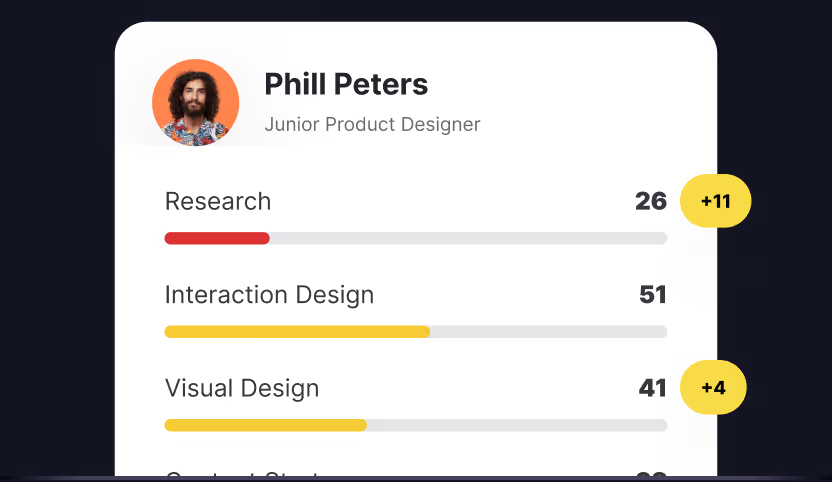
Choosing a design tool can be a daunting task. You have to consider multiple use cases, prices, and your current skill level before picking the right one for you. Sometimes, you might even need more than one. So, what factors should you keep in mind when choosing a design tool that fits your project needs? Some tools are easy to learn, even for beginners, while others might require large pockets of your time. Depending on your needs, which might be to build a user flow, draft basic wireframes, create click-through prototypes, draw a logo, or produce an animation, you’ll also want to focus on the features different design tools offer.
How much you want your team to be involved in the design process is crucial to your decision. Some tools allow multiple people to edit, while some only allow sharing. Price is a huge consideration too and can make some teams settle for simpler but cheaper tools. Bring this topic up for team discussion and make use of free trials to verify if the selected tool really meets your needs.
To make things simpler for you, we’ve put together our favorite design tools that you could benefit from. Read on to find out if they’ll fit your needs.
Choosing a design tool can be a daunting task. You have to consider multiple use cases, prices, and your current skill level before picking the right one for you. Sometimes, you might even need more than one. So, what factors should you keep in mind when choosing a design tool that fits your project needs? Some tools are easy to learn, even for beginners, while others might require large pockets of your time. Depending on your needs, which might be to build a user flow, draft basic wireframes, create click-through prototypes, draw a logo, or produce an animation, you’ll also want to focus on the features different design tools offer.
How much you want your team to be involved in the design process is crucial to your decision. Some tools allow multiple people to edit, while some only allow sharing. Price is a huge consideration too and can make some teams settle for simpler but cheaper tools. Bring this topic up for team discussion and make use of free trials to verify if the selected tool really meets your needs.
To make things simpler for you, we’ve put together our favorite design tools that you could benefit from. Read on to find out if they’ll fit your needs.
Balsamiq
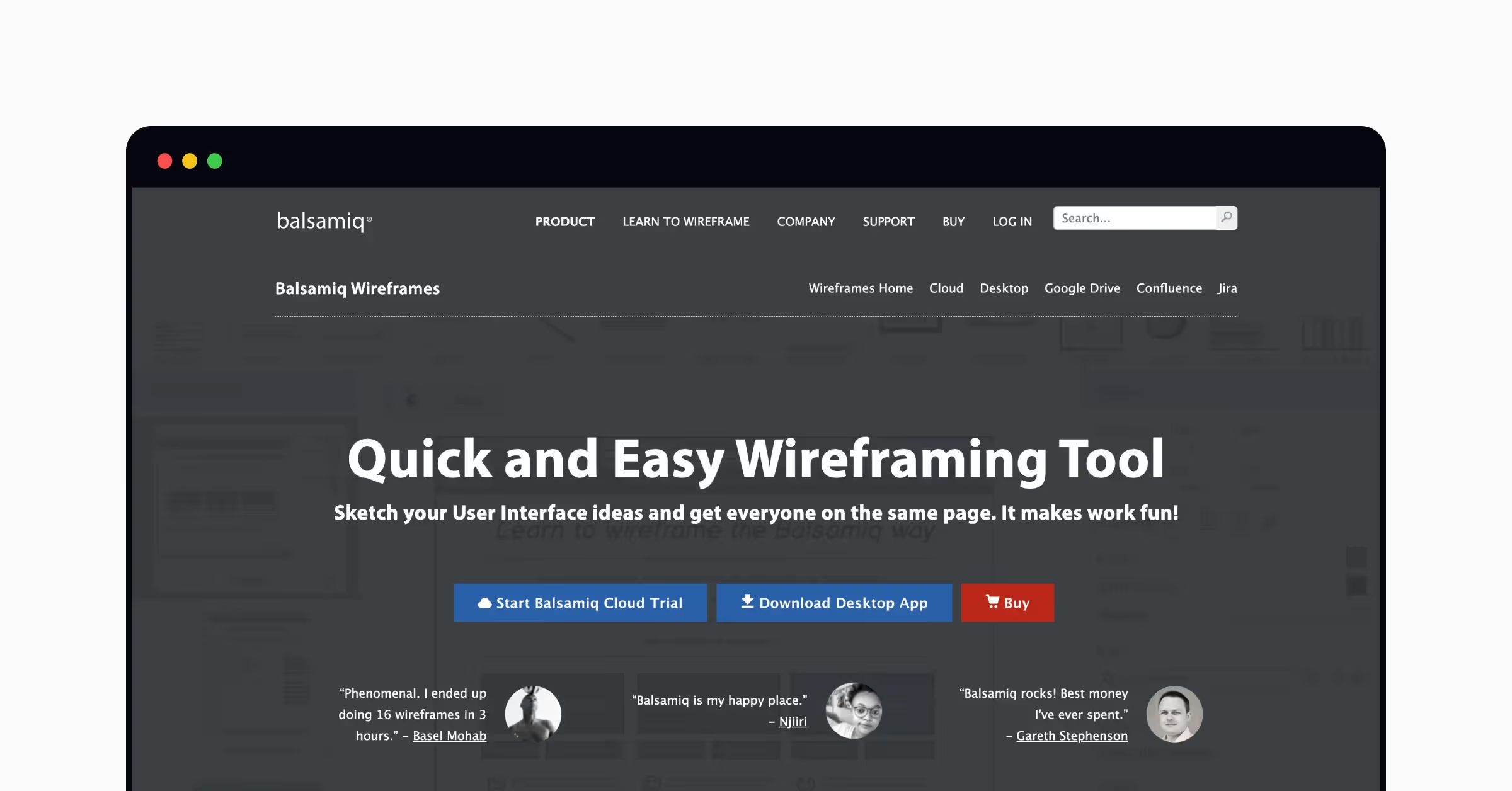
Balsamiq Studio has a unique sketching style that is hard to mistake for anything else. If you're searching for a rapid low-fidelity prototyping tool that you can learn in no time, look no further. The first version of Balsamiq was released in June 2008, and now the tool comes in 3 versions — web, desktop app, and plugin.
Balsamiq Studio offers 75 UI components and 180+ icons that designers can arrange with a drag & drop editor to build basic wireframes. More importantly, you can link screens and present a simple live prototype to your team before rushing into development. It’s the perfect fit for quick sharing, receiving feedback, and testing ideas. Balsamiq Studio doesn't have a free version but offers a free 1-month trial.
For a deeper understanding of the wireframing process, its application, and best practices, explore our Designing Wireframes course prepared in collaboration with Balsamiq.
Once done, don’t forget to put your knowledge to the test with our wireframe and wireflow building challenges and get feedback from design professionals.
Axure
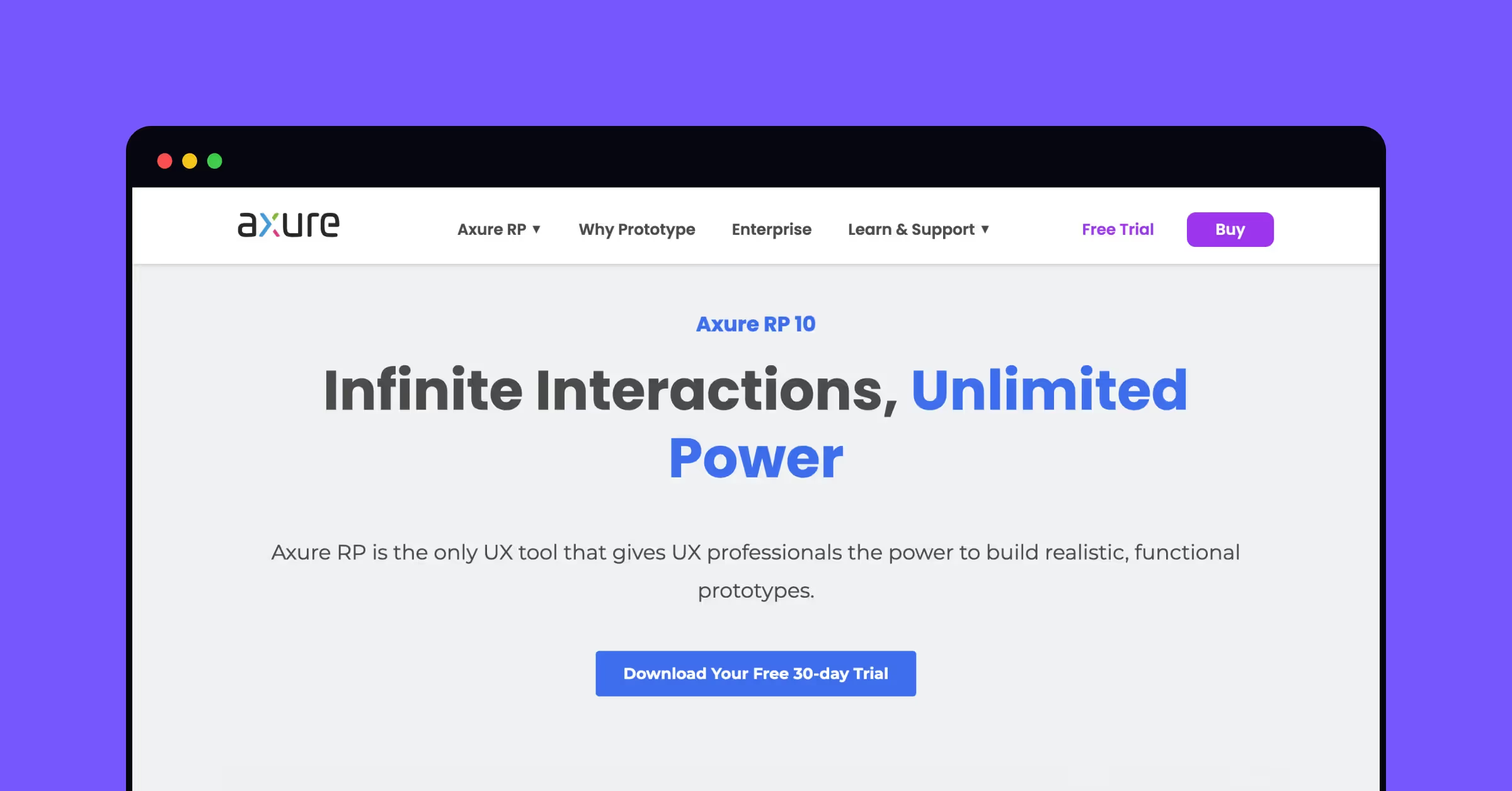
Axure is an interaction-centered tool, heavy-loaded with capabilities. Despite its substantial price ($300-504 yearly), many designers consider Axure unparalleled when it comes to wireframing and prototyping.
In contrast to Balsamiq and other wireframing tools, Axure handles even the tiniest interactions that make the user experience delightful. It allows you to create everything in one place: user flows, customer journey maps, storyboards, sitemaps, information architecture, low and high-fidelity wireframes, and complex prototypes. Advanced functionality allows setting custom interactions (like parallax scrolling or various touch interactions), conditional logic, validation, and more. Axure allows you to visualize complex use cases before the design handoff, preventing multiple QA issues in advance. However, it isn't the best option for rapid prototyping and takes time to learn for beginners. If you want to see if it’ll be a good fit for your team, make use of their 30-day free trial.
Not sure where to begin your learning journey with prototyping? Check out our Mobile Prototyping lesson.
Figma
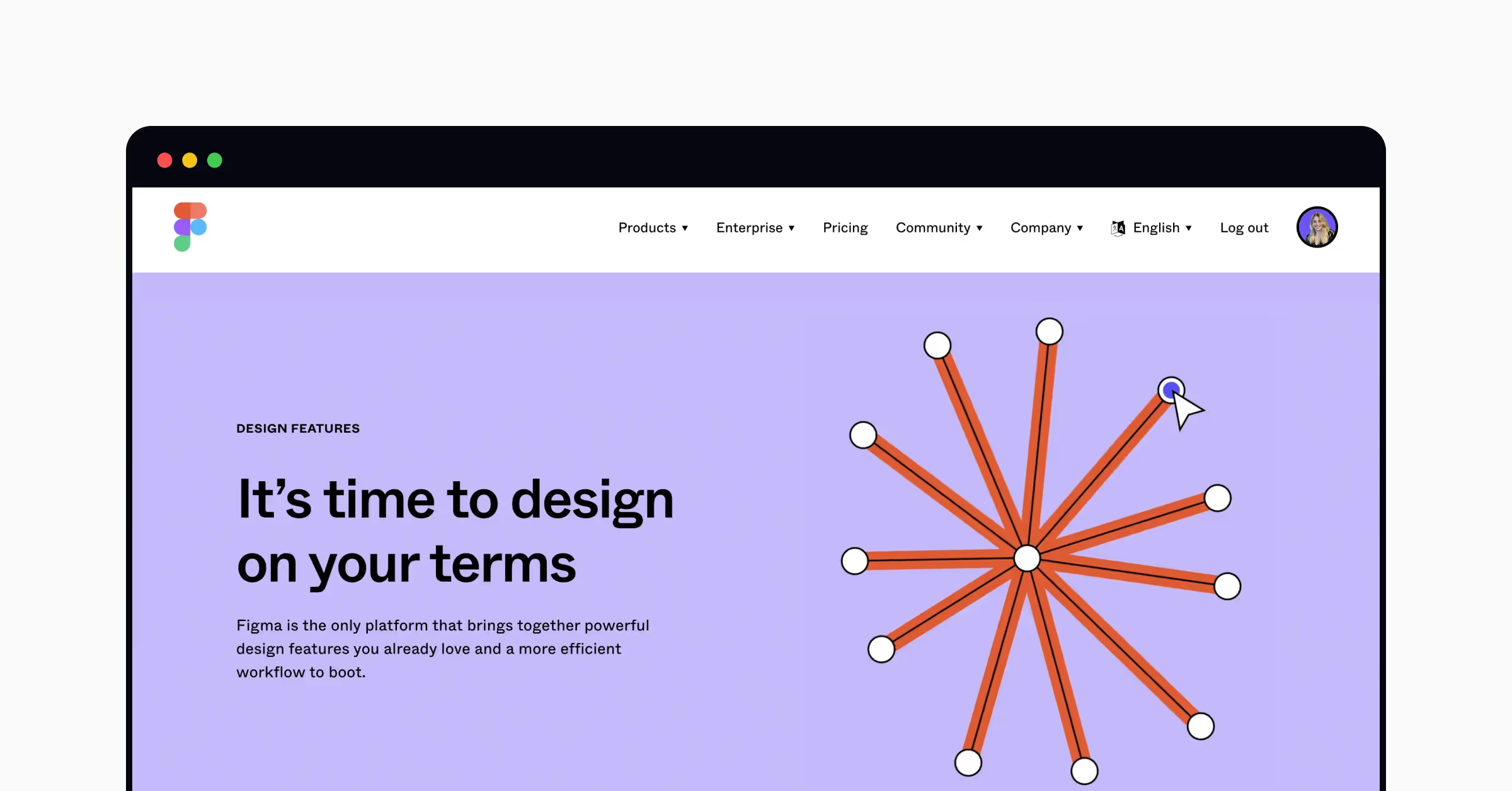
When Figma came along, the battle for the title of the best graphics editor between Sketch and Adobe XD started to heat up. At first glance, Figma simply looks like another alternative design and prototyping desktop and cloud-based tool. However, it's one step ahead of others in terms of grid flexibility. Not to mention it’s a completely free vector tool with a symbol library and style guide.
Figma offers a seamless experience when prototyping, presenting designs, and gathering feedback from teammates and clients. With its collaboration features, it's an ideal design tool for remote teams. You can also invite the dev team to the project so they can grab the code snippets and specs they need. Plus, the tool offers a rich and up-to-date plugin library.
As of 2022, Figma has been acquired by Adobe, which plans to integrate features from its software portfolio, as well as its library of fonts and stock images, into the tool.
Is Figma your cup of tea? Test your knowledge of the design tool using our Figma Assessment.
Marvel
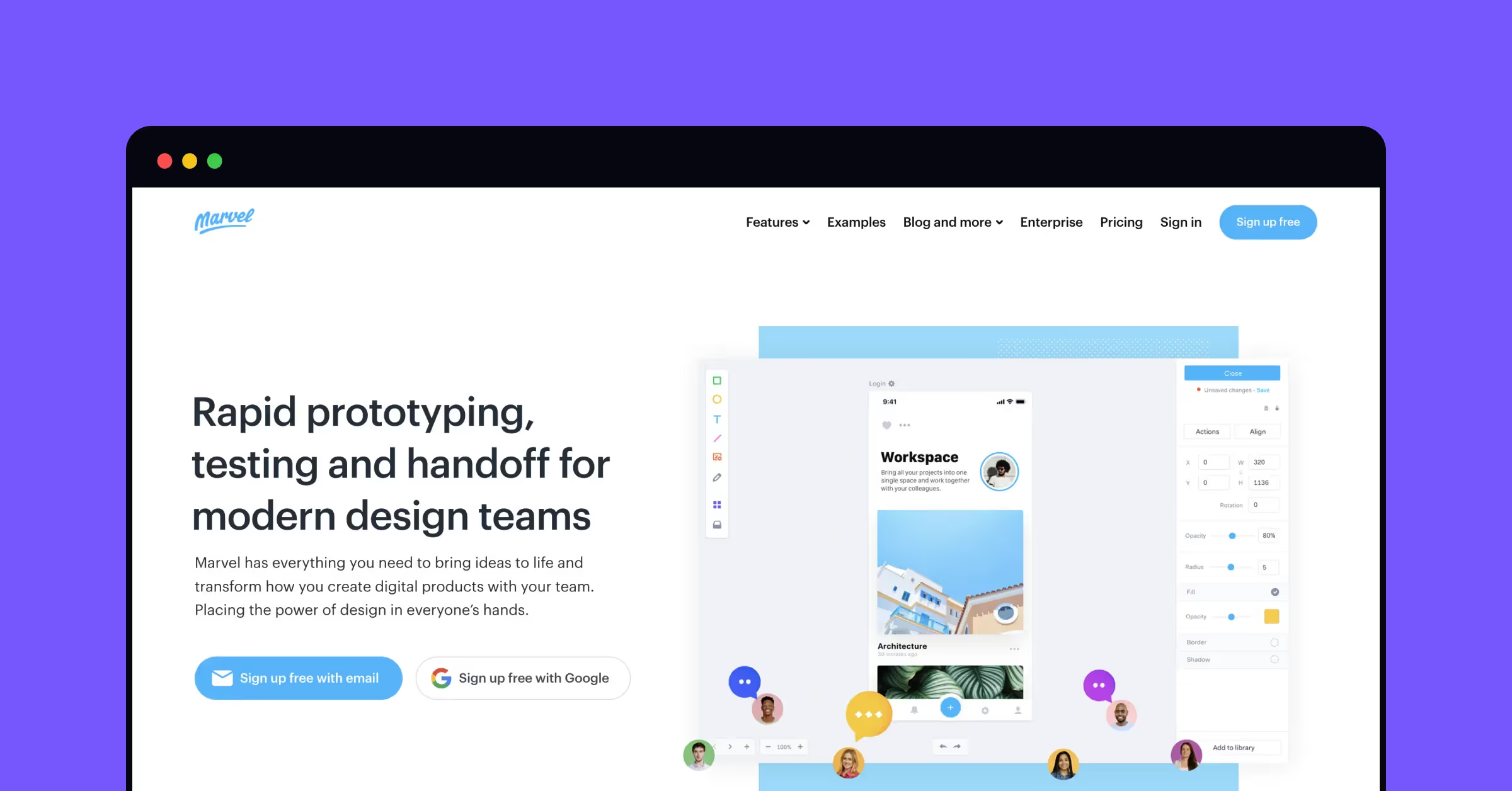
Released in 2013, the Marvel app is a rapid prototyping app that has already attracted over 2 million users worldwide. How does it work? After you upload or integrate designs from Photoshop or Sketch, you can build microinteractions and screen interactions to create real-life desktop and mobile prototypes for user testing. Marvel is a top choice for startups that need to coordinate their processes quickly and easily. User experience shows that Marvel requires less effort and thought in contrast to Invision. Plus, Marvel offers a collection of free and simple prototyping lessons that you can explore before you start working on your own prototypes.
Marvel currently offers a free individual trial for one project and user test and a 7-day free trial for teams, after which prices range from $96 to $288 per year.
UXPin
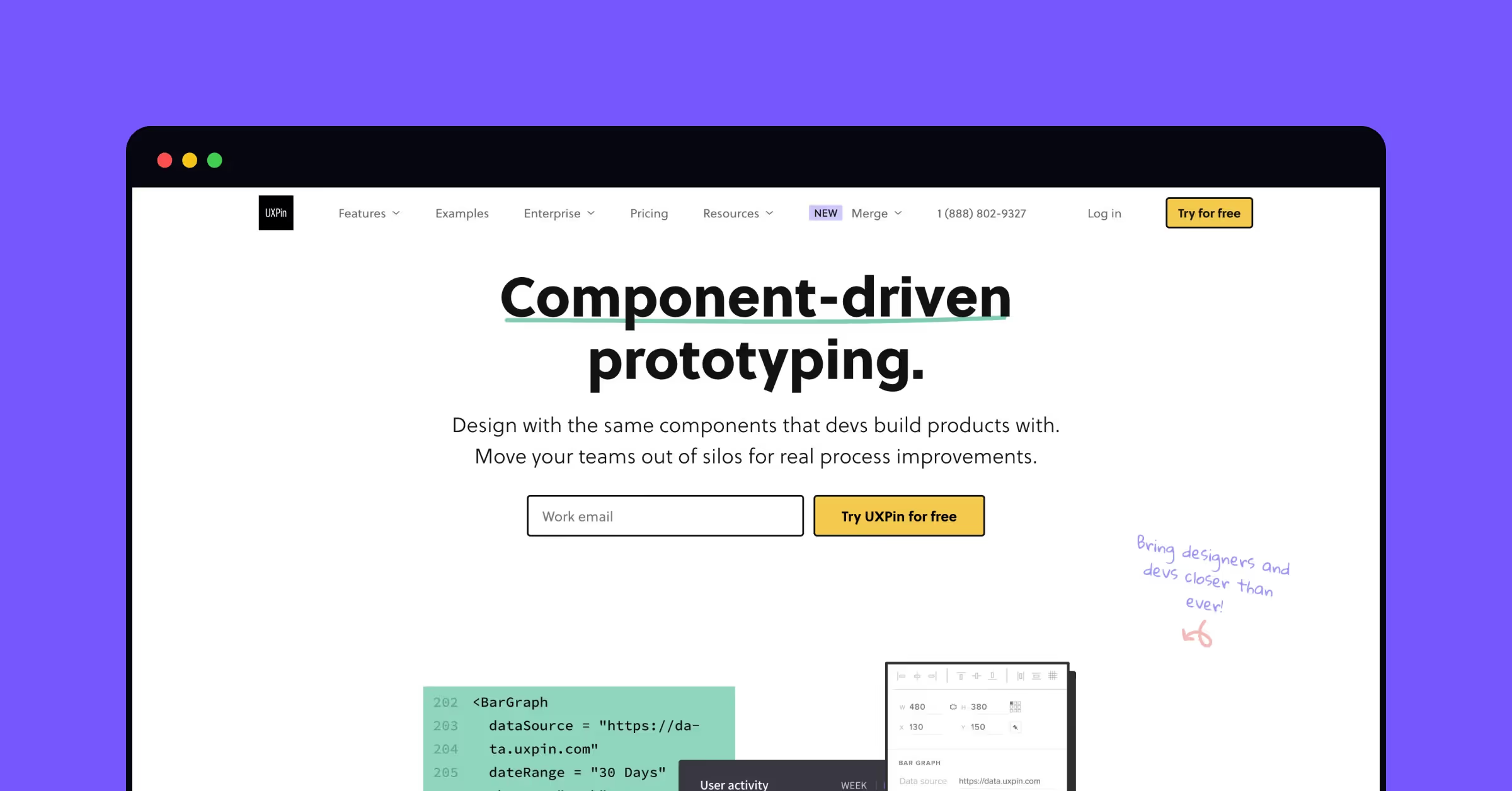
With UXPin, you get access to both powerful interaction and collaborative capabilities. First, it provides regularly updated libraries of iOS, Material Design, and Bootstrap components and icons. Plus, it allows you to import designs from Photoshop or Sketch. You can animate states and page transitions and add rules for conditional interactions to create genuinely advanced, realistic prototypes.
Second, UXPin is an overall fantastic real-time collaboration tool that allows co-designing, leaving notes and feedback, and assigning comments to teammates. With UXPin, you can also craft a design system library to keep all colors, fonts, and assets from each prototype in one place — it helps maintain consistency when scaling a product, which is essential to usability according to the 10 Usability Heuristics by Jakob Nielsen.
In contrast to Figma and Sketch, UXPin is not vector or pixel-based. Instead, it's code-based, meaning that all designed components would look exactly the same in the end product. UXPin currently offers a free trial and paid version for individuals and enterprises, with the paid versions being priced on the higher side.
Framer
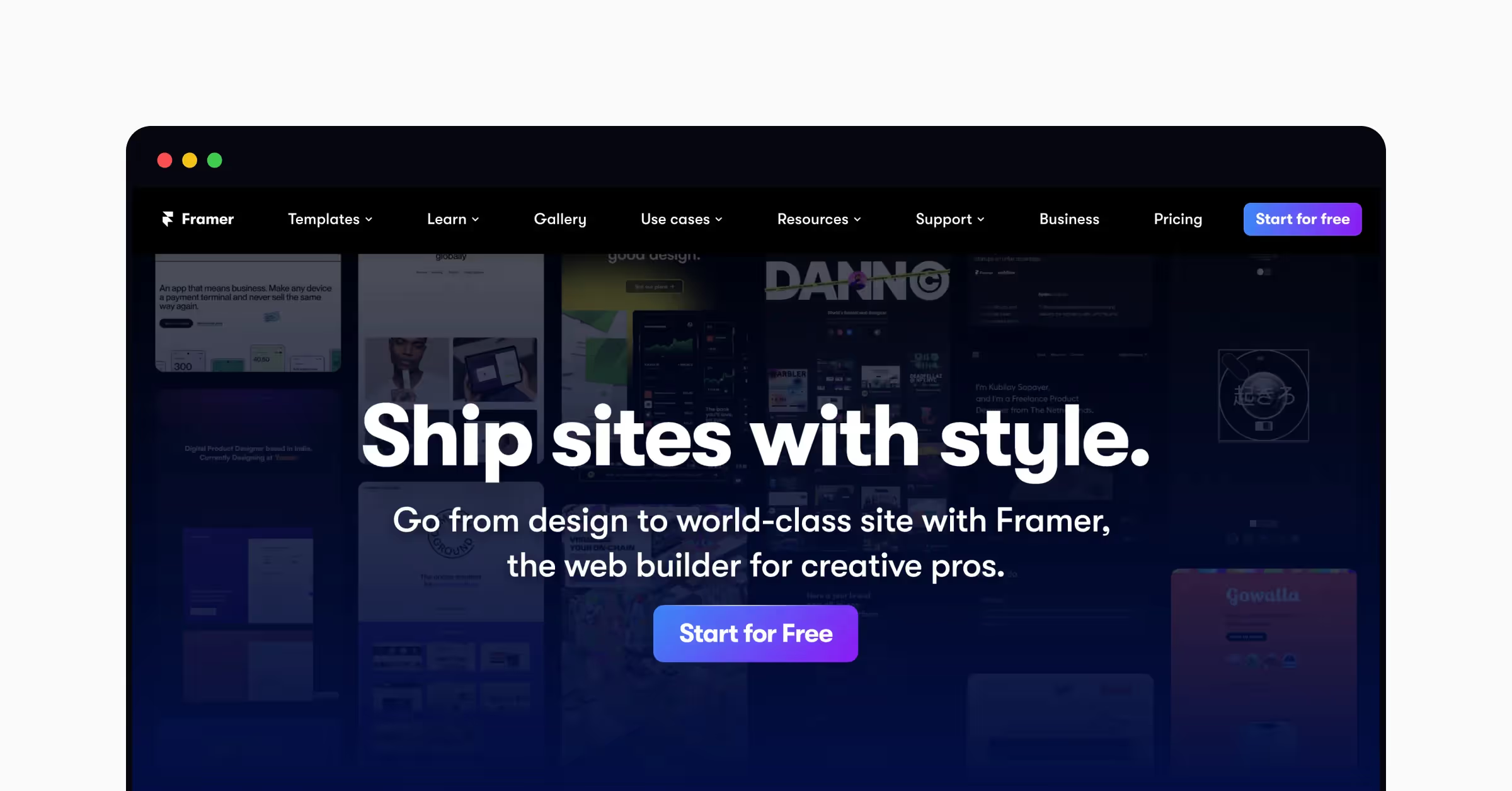
Originally, Framer was a code-based tool for creating prototypes, but it's been growing its design capabilities. Today, it is a no-code interactive design tool for building websites and prototypes. It helps users create entire marketing sites, landing pages, online campaigns, and more. It supports every part of the design process, from visual mockups to interactive prototypes, but its unique strength lies in publishing directly from the canvas. With its seamless usability, collaboration, design features, and short learning curve, Framer has everything it takes to be part of any designer’s arsenal of tools. Your design skills are as important as design tools — learn how to quickly and efficiently improve them using our guide.
Framer currently has a free version for design hobbyists and reasonably priced paid plans for experts and teams.
Justinmind
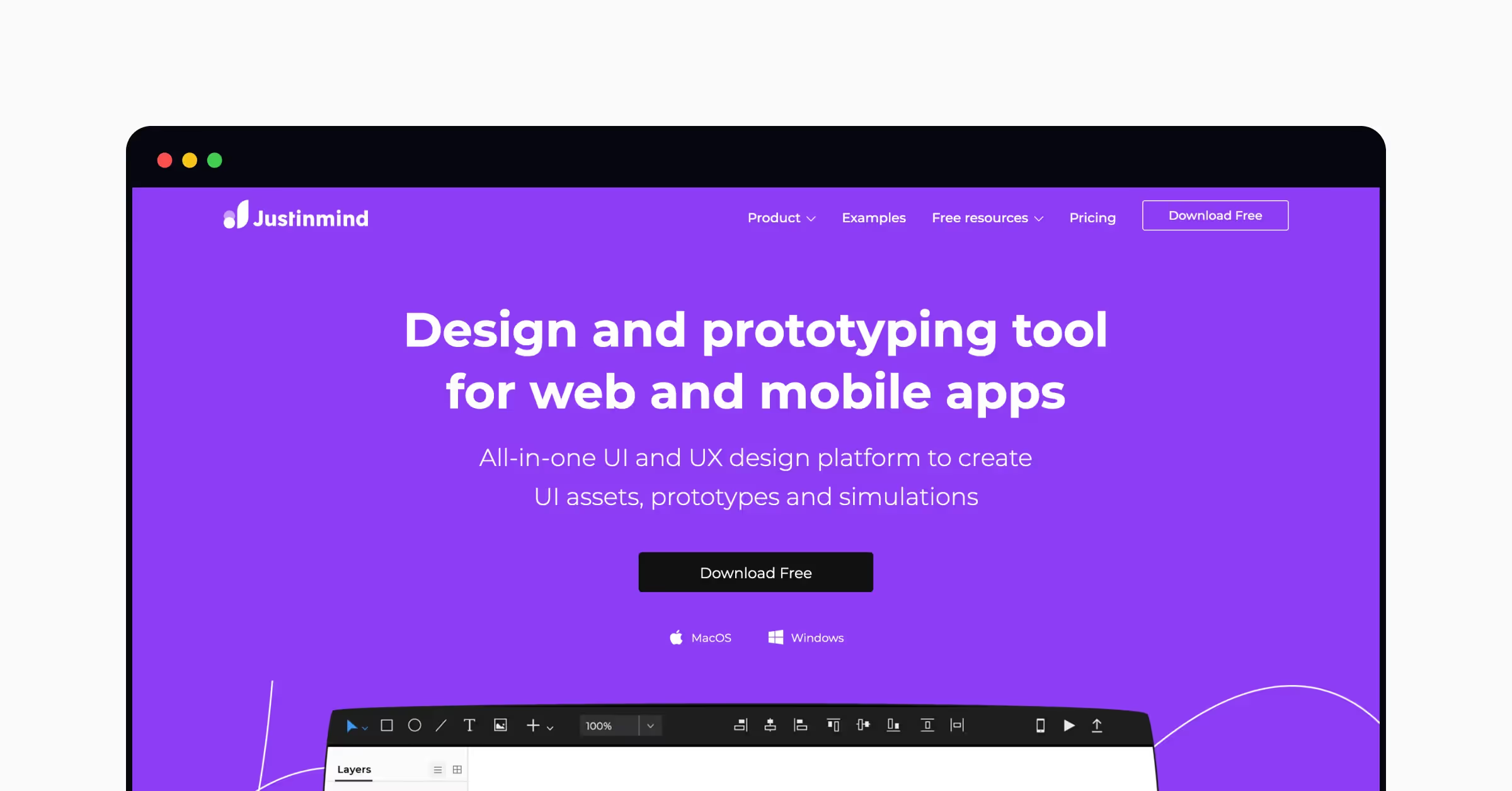
Justinmind goes head to head with UXpin as it also contains features for drawing, drag & drop designing, prototyping, and creating your own design system library. What makes it stand out is the possibility of creating adaptive and responsive designs and a wide range of tutorials for beginners.
If you're still on the fence, consider that Justinmind offers almost full functionality free for life. Once the free trial of the full version ends, you get access to a free version with a few limitations.
Adobe XD
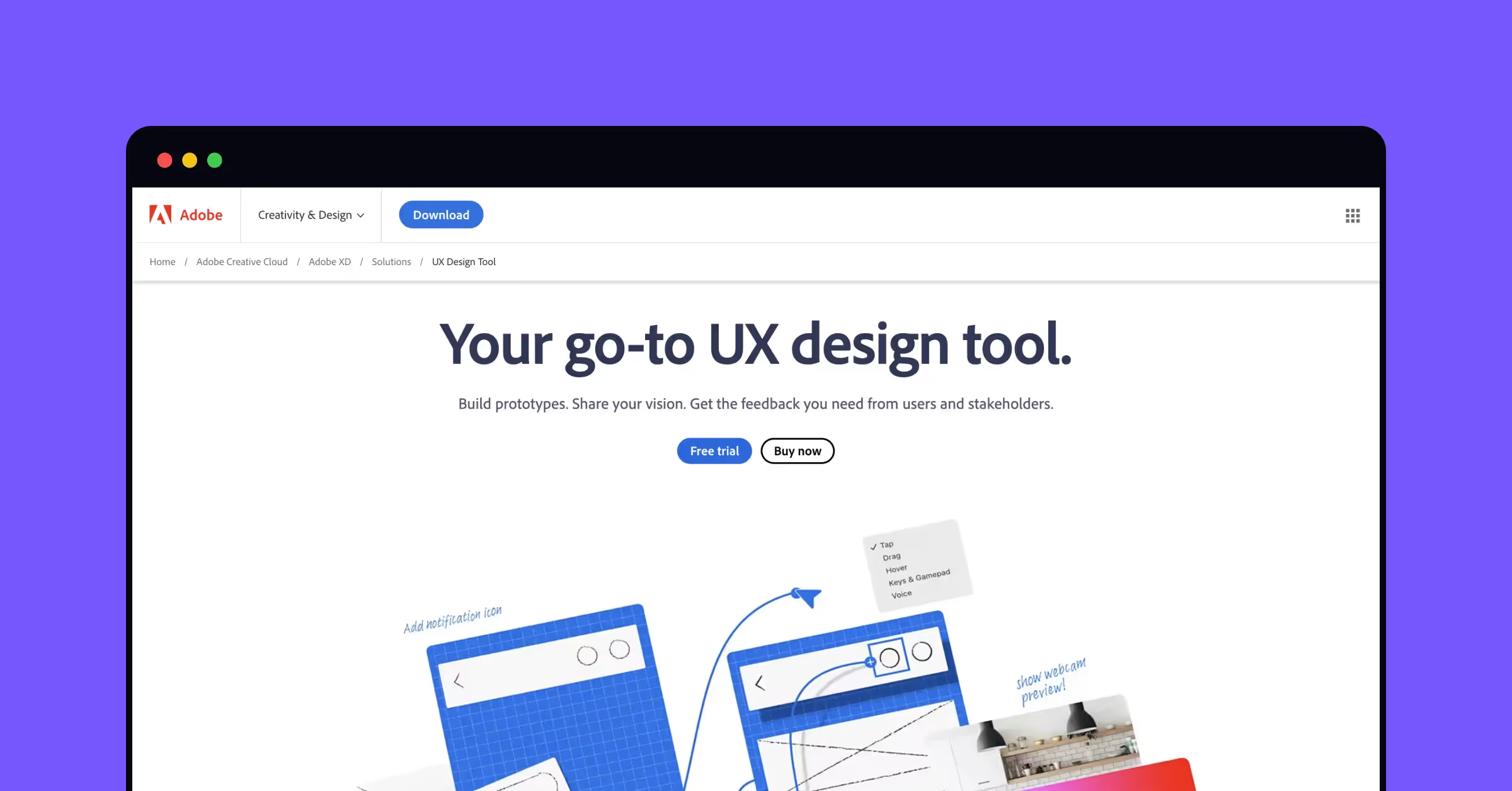
An entire generation of designers grew up using Adobe Photoshop — and we all can agree that it wasn't hardwired to create UI. In 2016, Adobe released its all-in-one solution for designing wireframes, screen layouts, and interactive prototypes — Adobe XD. A big plus is a smooth integration with other Adobe products, like Photoshop, Illustrator, or After Effects. As of 2022, Figma has been acquired by Adobe. Plans to integrate it with Adobe's software portfolio, as well as its library of fonts and stock images, are in the cards.
In comparison to its competitors like Sketch. Adobe has an edge in prototyping. In 2018, the company launched a voice toolset that allows designers to use voice commands in their interactive prototypes. Adobe XD currently offers a 7-day free trial.
Is Adobe XD the design tool for you? Test your knowledge and skill level in Adobe XD using our Adobe XD assessment.
Sketch
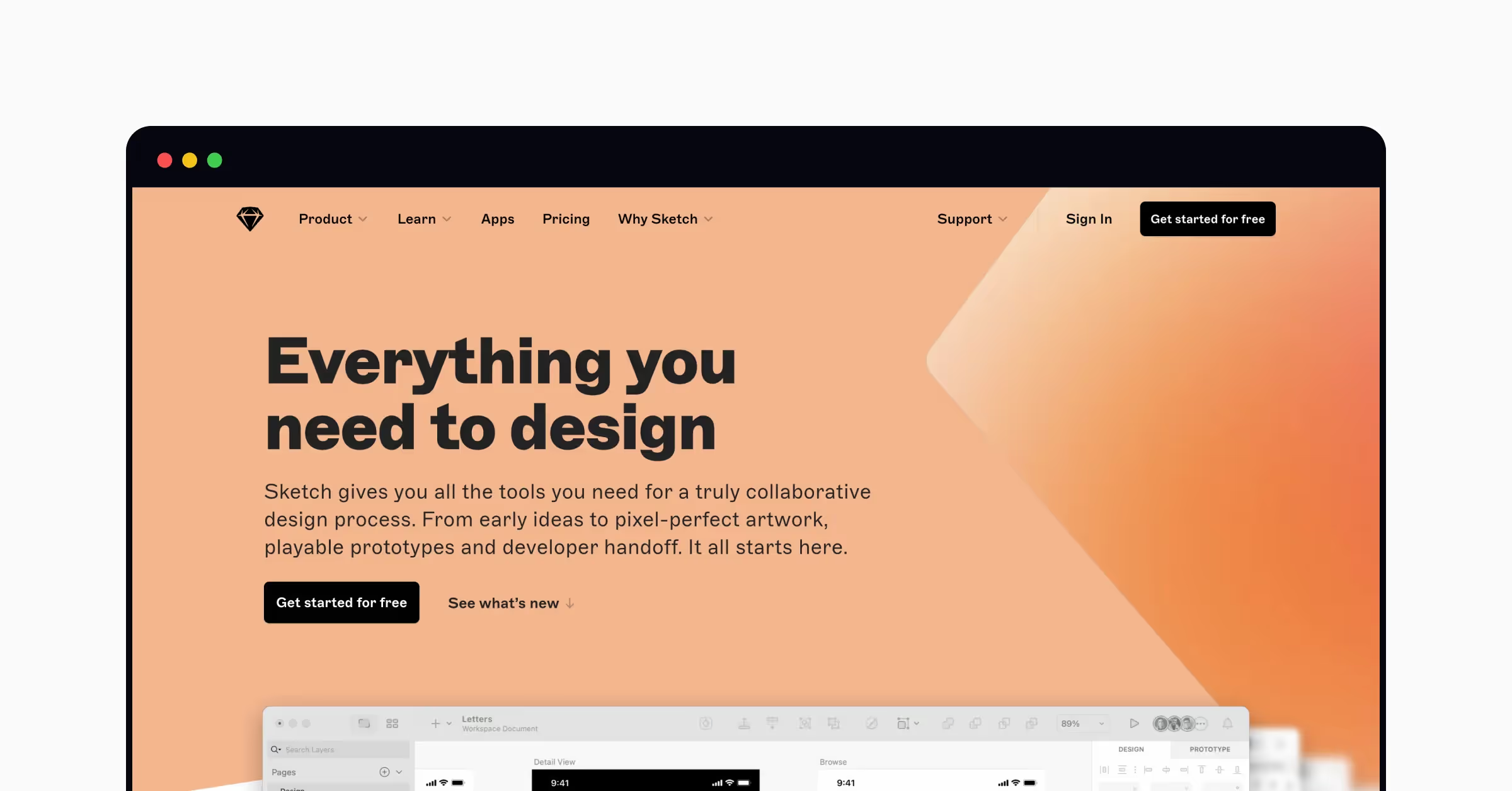
Sketch is one of the sturdy legs on which the design world stands. Over the last decade, this traditional desktop-based tool has helped people design, prototype, and collaborate with team members. When it comes to integrations, Sketch has no rival, and there's virtually nothing that you can't design in it — provided you have the right set of plugins. It’s a vector-based tool and provides enough functionality to create quite complex vector artwork.
In 2018, Sketch introduced prototyping tools that aren't as flexible as Adobe XD's but are developing quickly. The bad news is if you don't own a Mac, Sketch is out of your reach. Keep in mind the tool has a 30-day free trial.
Already a user of Sketch? Take our Sketch assessment and see how you stack up against other designers worldwide.
Proto.io
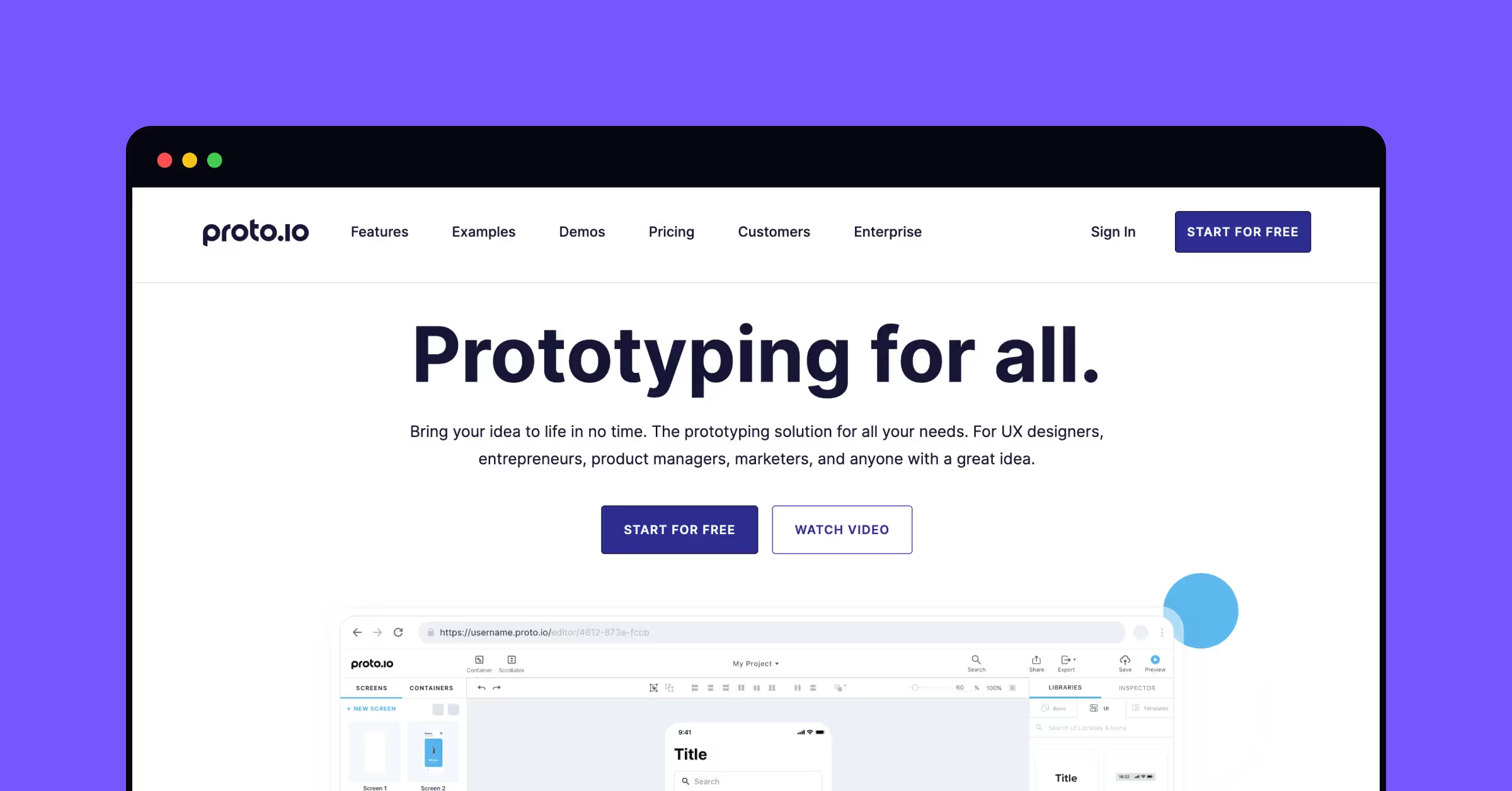
Proto.io is a design and prototyping tool with some unique tweaks that might capture your attention with its rich libraries of UI components, icons, animations, and videos. It allows the creation of lifelike designs and vector animations with an easy-to-use timeline. With Proto.io, you can generate mobile and web prototypes and conduct full-fledged user testing with live recordings, tasks, and surveys. Before you do, be sure to brush up on your user research skills with our UX Research course.
Proto.io currently offers a 15-day full-featured free trial.
ProtoPie
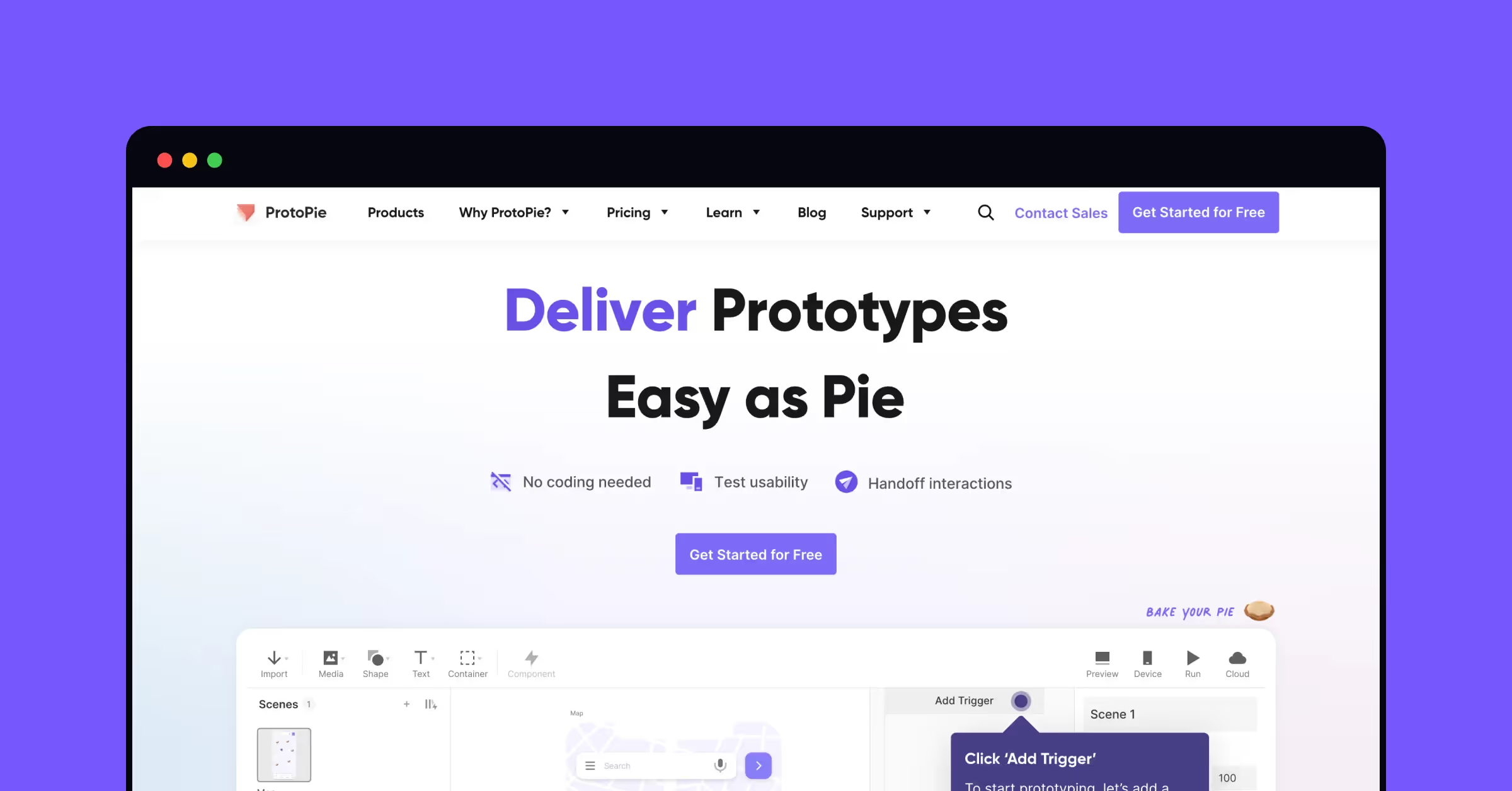
ProtoPie might not be that popular, but it has features that set it apart from other prototyping tools. It allows you to master intricate interactive prototypes without coding skills using its extensive collection of formulas, variables, and conditions.
ProtoPie is great for mobile apps and supports multiple smartphone sensors. For instance, the proximity sensor allows users to turn off the screen when they bring the phone closer to their ears. Plus, you can test your ideas with the ProtoPie Player app or in mobile browsers or even save prototypes on your device. The tool has a limited-feature free trial for people just starting out with high-fidelity prototyping.
Having a strong foundational knowledge of design makes using these design tools easy and effective. Build yours from scratch and chose from a variety of our beginner-friendly courses like UI Components I, UI Components II, or UX Design Foundations.




